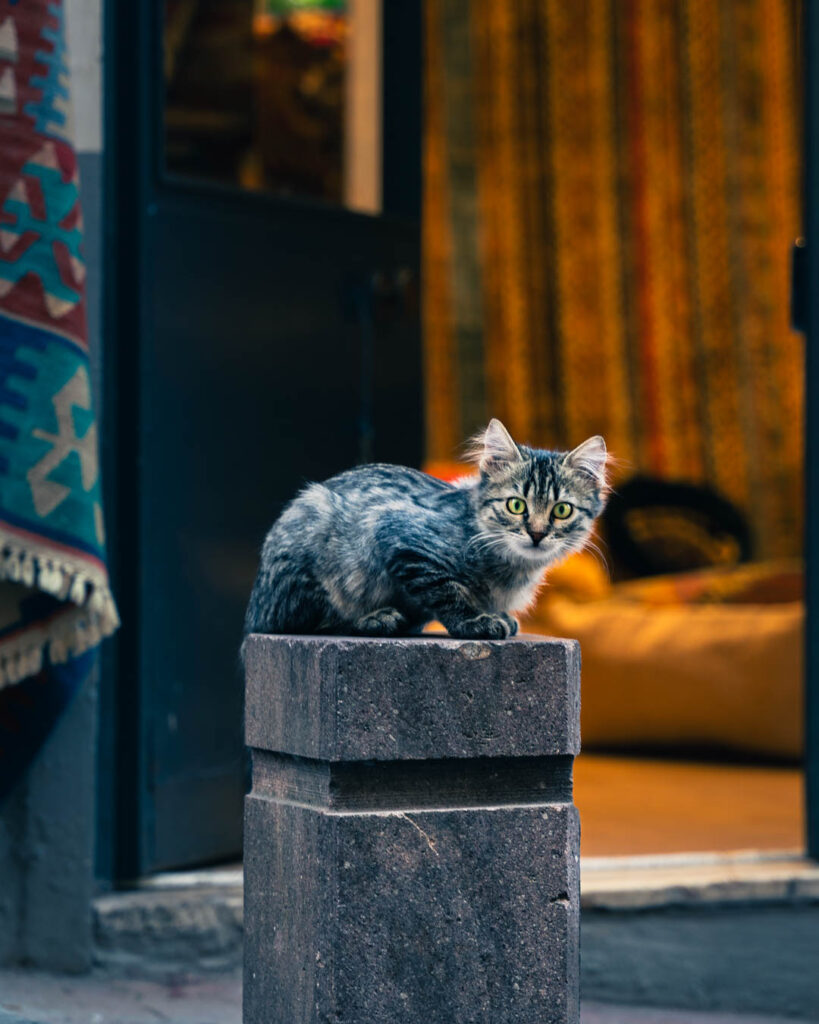In truth, Istanbul was never high on my list of places to visit, and we only stopped off here as you can’t get direct flights to Cappadocia. However, we were pleasantly surprised with the city and its unique mix of cultures, architecture, and history. We spent 3 nights here, which was just enough to get a feel for the city, but it has also left me wanting to go back and explore the city more.
We stayed in Sultanhamet, the tourist district of the city, for good reason. The vast majority of the famous sites in the city are here and within walking distance of each other, so it makes a great first day of exploring. Within just a 10-minute walk, there is the Blue mosque, Hagia Sophia, Cistern Basilica, and the Topkapi Palace, all of which are stunning feats of architecture with so much history to tell. We found the entry fees to these, and many of the other attractions, to be pretty expensive when compared to similar historical sites in Europe. The Blue mosque is free, but the other three attractions mentioned are an average of 30-40 euros to enter; for reference, the Colosseum in Rome can be as little as 15 euros, and almost all of Vatican City is free except for going to the top of St. Peter’s Basilica or entrance to the Sistine Chapel.
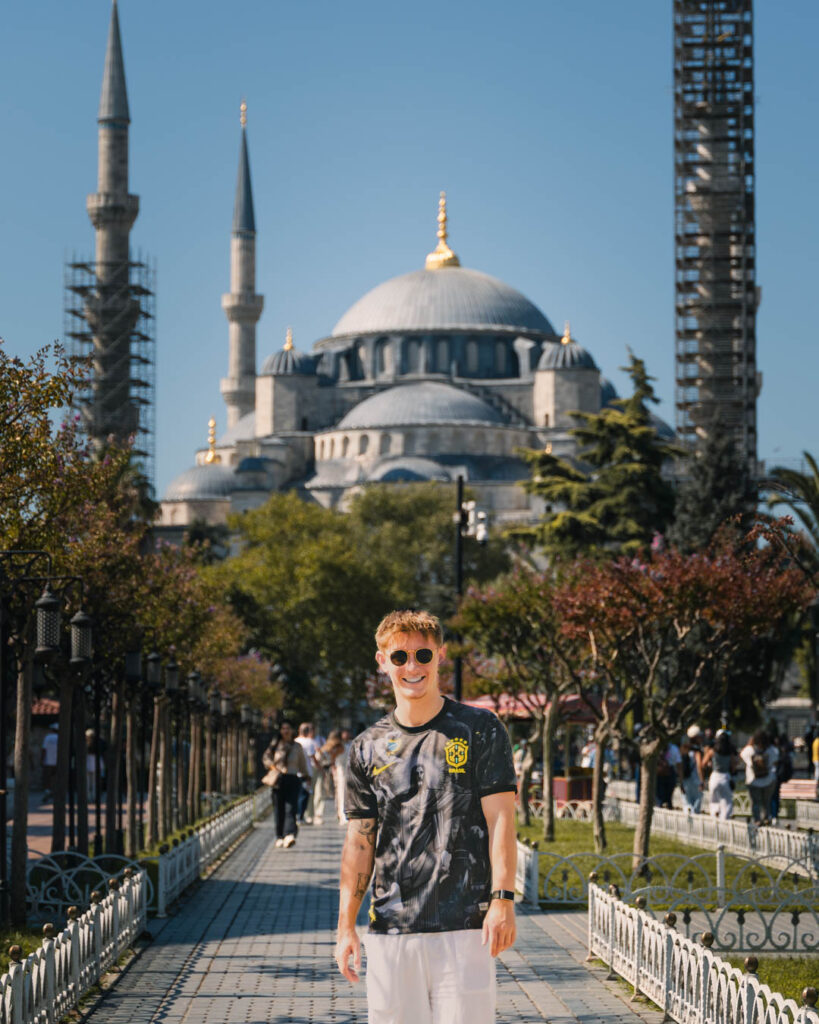
My favorite attraction in Sultanhamet, and probably one of the lesser-known, was the cistern basilica. This is one of many huge underground water reservoirs which were constructed underneath Istanbul, then Constantinople, to serve as a direct water supply to the palace and surrounding area in the event of a siege or drought; capable of holding up to 80,000 cubic meters of water. These cisterns are unique to Istanbul and something that, to my knowledge, you cannot see anywhere else on earth, or certainly not to this scale at least. The Basilica Cistern is the most famous in Istanbul because of its proximity to other attractions and the installations of modern art that have been added in recent years.
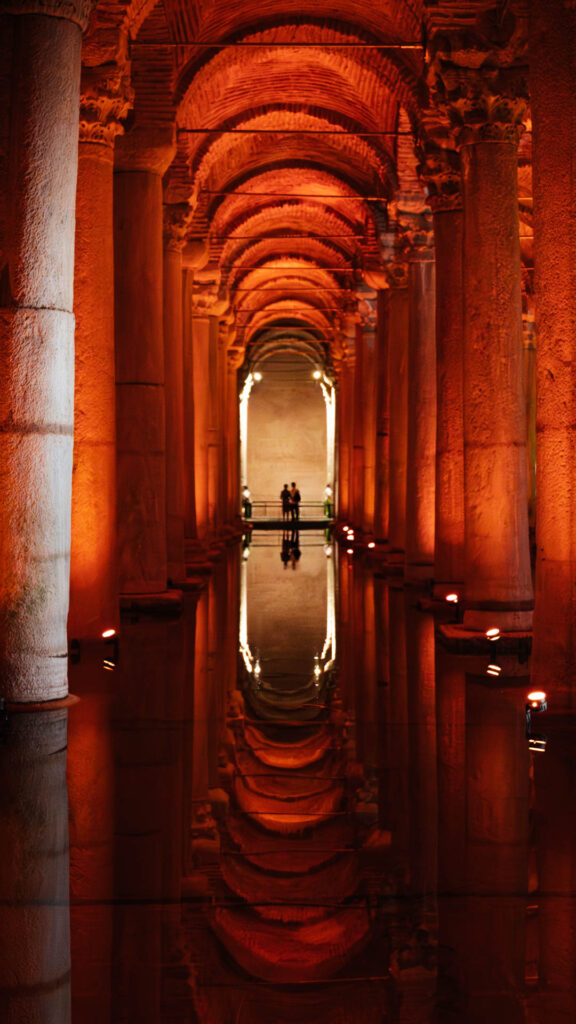
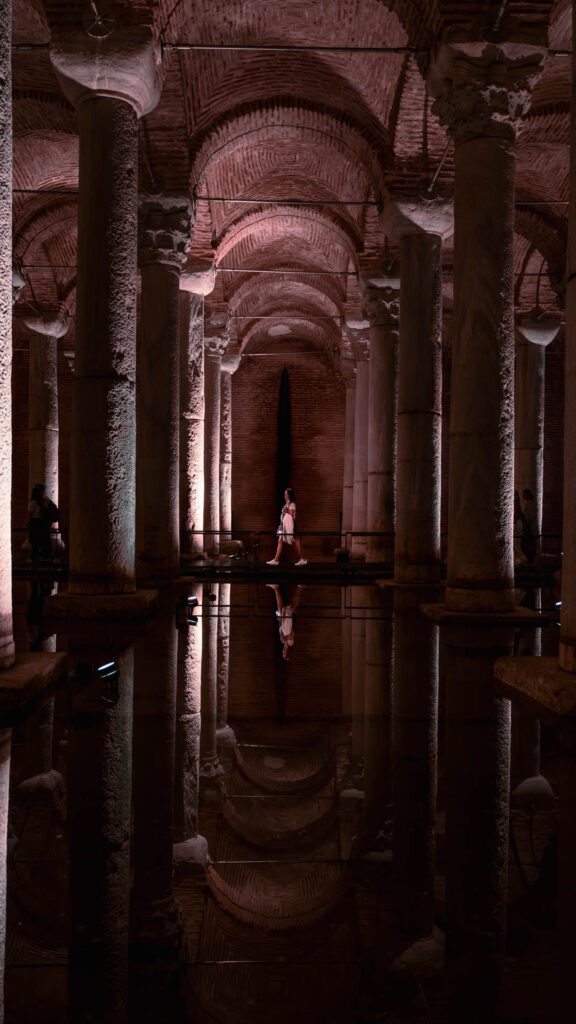
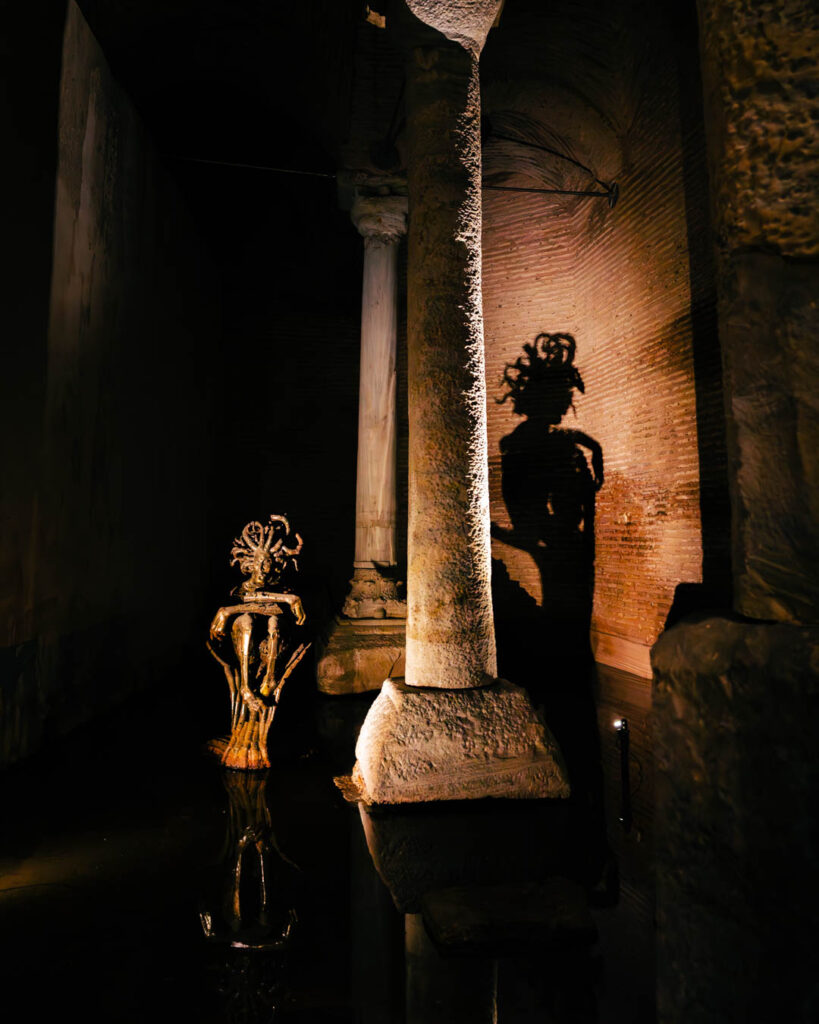
If you’re looking to save a bit of money on your trip, there are some cheaper alternatives that give similar experiences. For example, the Blue mosque is free to enter and shares many of the same features and architecture as the Hagia Sophia, which costs more than 30 euros to enter, solely because of its famous name. In addition, you can save another 30-odd euros by visiting the gulhane park Cistern rather than the Basilica Cistern. This is just a ten-minute walk difference and is right next to the Topkapi Palace, somewhere you’ll likely be visiting anyway. Of course, the reason it is free is because it is smaller, much smaller, at just 2% of the area of the basilica cistern, but this is enough to show you the scale of the cisterns and teach you about the history, construction, and use of cisterns across Istanbul. Just these two swpas can save you around 70 euros whilst still delivering 90% of the experience – something I wish I’d found out before we arrived.
On our second day, we ventured across the Golden Horn Bay to explore the districts of Orkatoy, Besiktas, and Karakoy. Starting in Ortaköy to visit the mosque and take in the famous view out over the Bosphorus River to the asian side of Istanbul. Here you can try the local street food Kumpir, a kind of jacket potato loaded with fillings, which is hugely popular in this area, and grab a coffee before hopping on a ferry just down the river to Besiktas. Of course, this is home to one of the biggest football teams in Turkey, and a stadium tour is just 20 euros; however, this is not what we came to see. Just across the road from the stadium is the Dolmabahçe Palace, which is like something straight out of a fairytale. From the outside, it is a grand white marble palace that looks similar to those all over the world, but its interior is simply incredible. So good that photos and videos are prohibited. The level of wealth on display here from the Ottoman Empire is simply ridiculous, with the palace estimated to have cost 5 million Ottoman gold pounds, or 2 billion US dollars in today’s money. Its centerpiece is the ballroom with a 35-meter-high domed ceiling supported by 56 marble columns and the small matter of a 4.5-ton crystal chandelier. This, of course, comes with another 30+ euro entry fee, but this is one I’d pay any day of the week. Its location right next to the Bosphorus River gives incredible views as you exit the palace with a grand gate framing the view out to the asian side of the city and the sister palace at Beylerbeyi.
After leaving the palace, we headed down into Karaköy to visit the famous Galata Tower; I’d recommend getting the tram to the Tophane tram stop rather than the Karaköy stop; while it is still an uphill walk to the tower from here, it is nowhere near as steep as the walk up from Karaköy. We chose not to go up the tower itself but instead take in the views from the Anemon restaurant, a gem I found on TikTok. This restaurant is located inside a hotel just next to the Gakata Tower and is open to the public. While the Galata Tower has a 30 euro entrance fee, you can enjoy the view from this restaurant, just a few meters shorter, for free, and while I’m usually not a fan of girl math, the money saved on not going up the tower certainly felt like a discount on our dinner next door. To finish the day, we walked down to the Galata Bridge for a stunning sunset over the city, watching the locals fish over the river as the city switches from sunlight to streetlights.
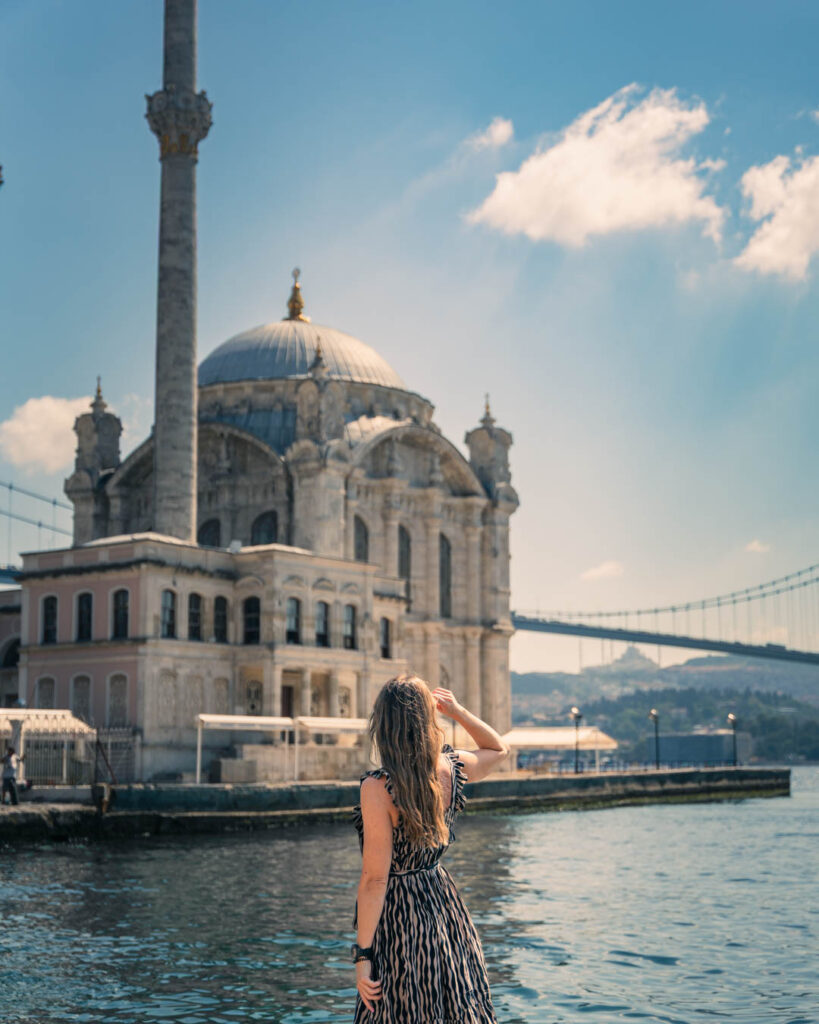

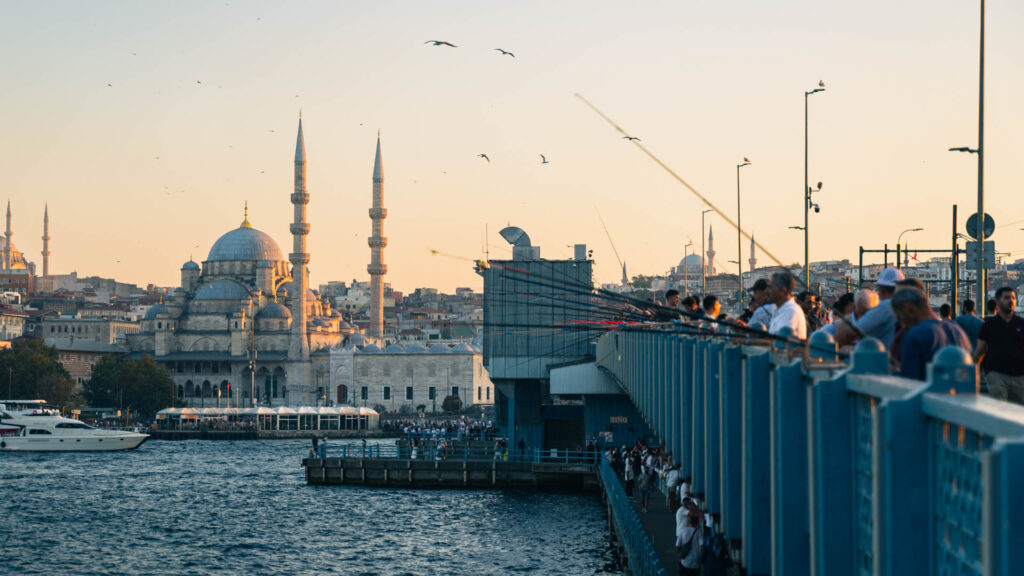
We only had a final half day before catching our flight to Cappadocia, and so we didn’t have the time to explore the asian side of the city; instead, we took a short tram ride into Balat. This is an interesting neighborhood made of colourful houses, street art, murals, and an abundance of cute coffee shops. It’s definitely a bit of an Insta trap, but a nice, relaxed morning out in the city, all of the same, and worth a visit.
What else is there to see in the city?
The most common activity, which I have not yet mentioned, is a Boshorous river cruise/tour. We did an evening dinner cruise, which included pick up and drop off, dinner, and entertainment for just over 20 euros, which is pretty good value; however, I wouldn’t say this is something you absolutely have to do. The ferry system in the city is pretty easy to use to get around, and so you can get a similar experience when you are on your way to and from places rather than paying for a boat ride that takes you back to where you started.

While a lot of what we missed out is similar to what we had already seen, there is more to see nonetheless. The asian side of the city is home to the largest mosque in Asia – the camlica mosque, located on Camlica Hill with incredible panoramic views of the city. There is also the Beylerbeyi Palace, beautiful historical neighborhoods like Kuzguncuk, and modern, trendy neighborhoods like Kadıköy, which are great for shopping and nightlife. We didn’t even scratch the surface of what the city has to offer after dark, with several famous street food spots and areas with fantastic nightlife.
How to get around the city?
Another easy way to save money in Istanbul is to get to grips with the tram system from the off. At just 70p a journey, the tram is incredible value and links almost the entire European side of the city, even as far out as the airport, which is a 50-minute drive from the city center. The tram map is available online with all of the signs at the tram stops in English, and it is just as easy to navigate as the London Underground. Usually, I am a big advocate for renting cars abroad, but this is not someone I’d even consider renting a car from. The traffic is often so bad that it is faster to walk short distances than to drive them. This is because many of the roads are not big enough to be two-way, and so if two groups of cars enter such a road at the same time from opposite ends, then one has to reverse back out to allow the other to pass. In addition to how tight these roads are, they are also almost all built on hills, and steep hills at that. Just jump on a tram or in an Uber and save the hassle.
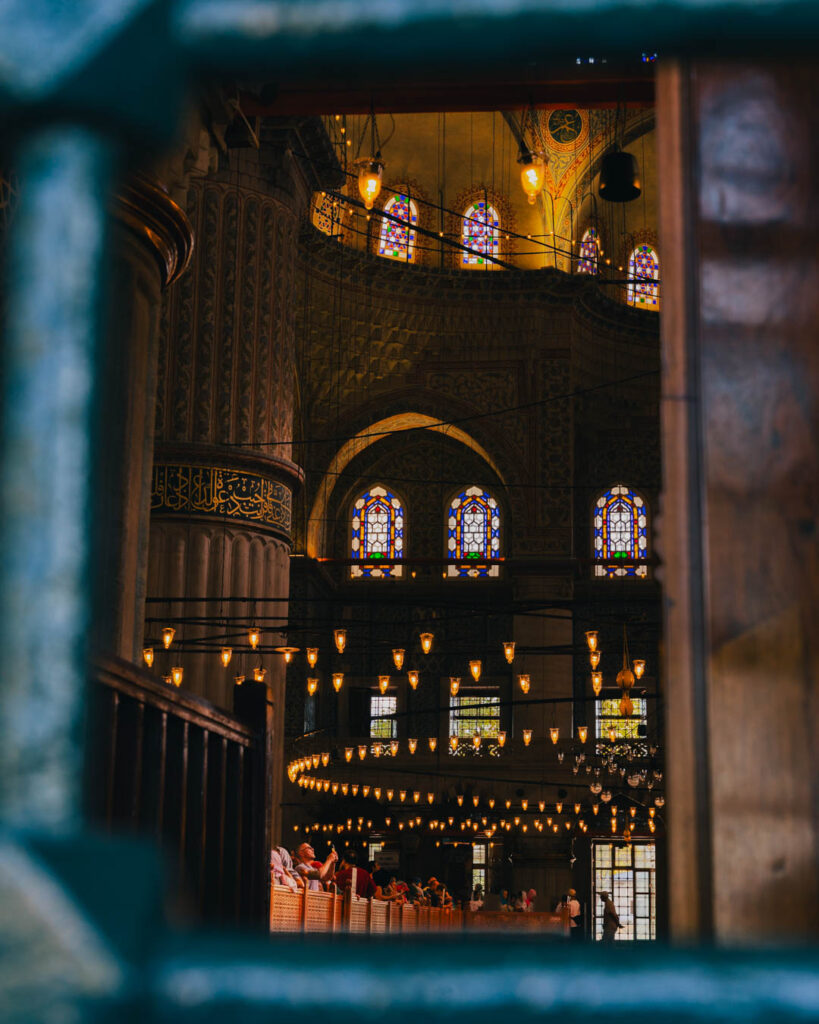
What is the food like?
I’m not sure how to feel about Turkish cuisine. To begin with, they certainly know how to cook their meat; whether it’s their kebabs, clay pot stews, or lamb shank off the grill, it’s sure to taste incredible. However, there is a real lack of diversity in their restaurants, which I found pretty repetitive after just half a week or so. With that said, you do have to try the clay pot meals – known as testi kebab and their flat breads – known as gozleme, which can come with various fillings and are a great, cheap lunch.
Where should you stay?
This very much depends on what kind of trip you would like to have. If it’s your first time in Istanbul and you’re here to sightsee, then Sultanhamet is the obvious choice. There are plenty of great hotels and hostels here, and the majority of what you want to see is within walking distance, so you don’t have to worry about transport. If you’re looking to save a little bit of money and are comfortable with figuring out the tram system, then I’d stay in the Taksim or Karaköy regions. Here, there are far more street food and local restaurants, which don’t come with the added cost of being next to any tourist hot spots, and you are still just a 20-minute tram away from all of the sights in Sultanhamet. This also gives you access to the top nightlife spots and neighbourhoods with a little more energy to them, as the locals are not outnumbered by tourists here.
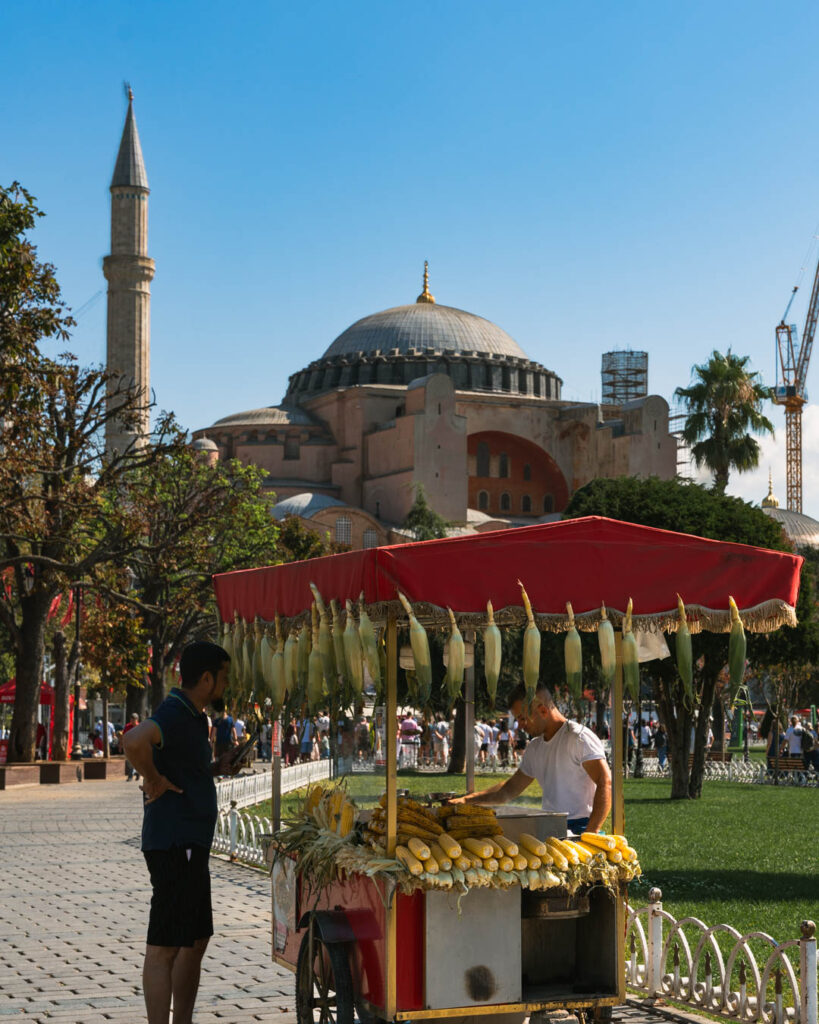
Would I go again/ recommend Istanbul?
I think Istanbul falls into the category of European city breaks where the main purpose of the trip is to sightsee, and, in that regard, it is competing with cities like Rome, Florence, and Barcelona. For me, these other cities just have a little more to offer when it comes to food and affordability; however, if you’ve already been to a lot of these European cities, the asian and muslim influence in Istanbul definitely separates it from the others, and it is well worth visiting. There’s certainly an Istanbul round 2 on the cards for me; staying in a hostel in the Karakoy or Taksim areas to experience more of the nightlife, local culture, and as a slightly easier base to reach the asian half of the city from.
